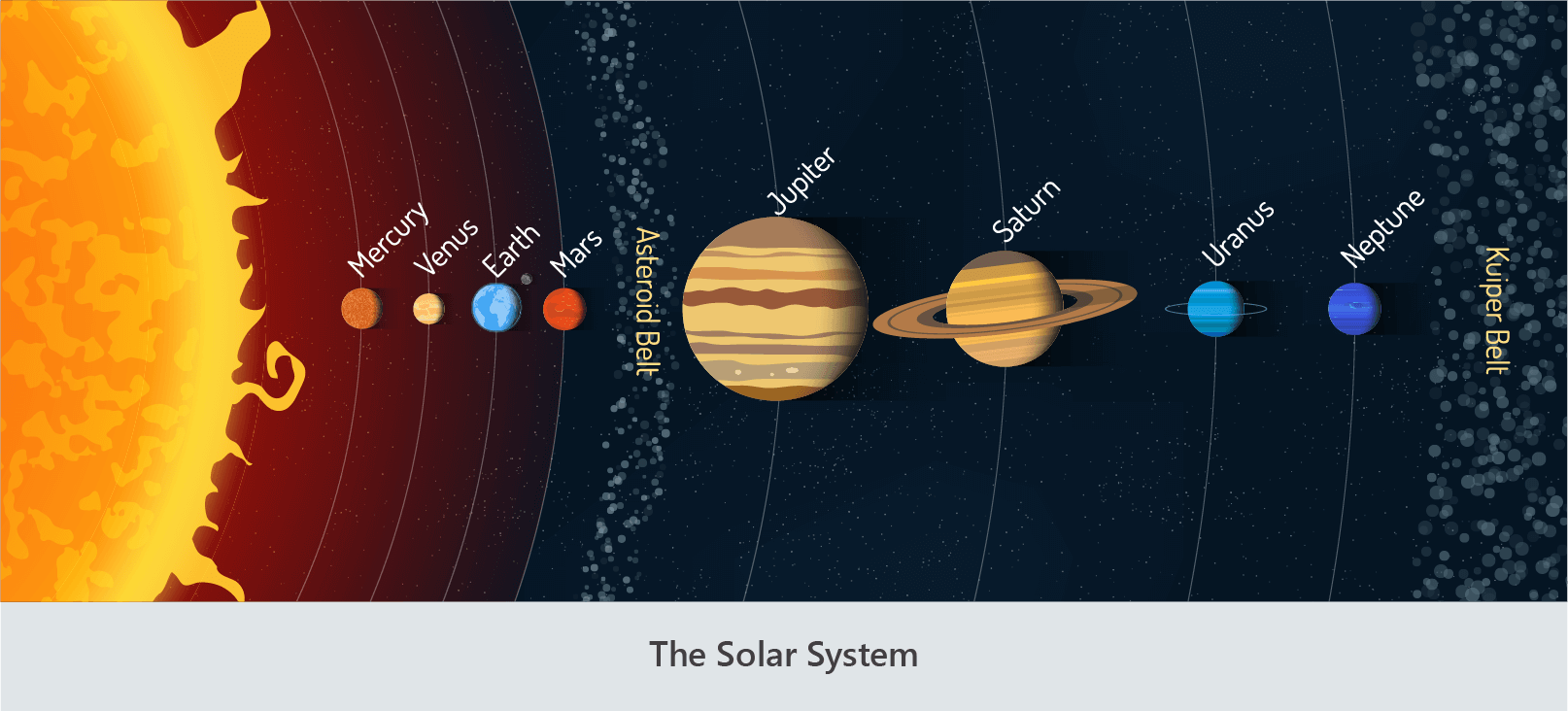2 | Our Solar System
Our Solar System
- Our solar system includes the sun, which is orbited by the planets, which are in turn orbited by moons.
- The solar system also consists of other bodies, such as asteroids and comets.
- The solar system can be divided into the inner solar system, which includes the four inner planets and the asteroid belt, and the outer solar system, which includes the outer four planets and the Kuiper belt.
The Inner Solar System
- The four planets of the inner solar system – Mercury, Venus, Earth and Mars – are known as the terrestrial planets (also as the rocky planets or solid planets).
- These planets are composed primarily of rock or metal.
- The planets of the inner solar system are much smaller than the planets of the outer solar system and all lack ring systems.
- An asteroid is a small rocky object that orbits the sun.
- Asteroids are much smaller than planets, ranging in size from less than a metre to several hundred kilometres in diameter, and with a variety of irregular shapes.
- There are approximately one million known asteroids in our solar system, most of which are found in a donut-shaped region between the orbits of Mars and Jupiter known as the asteroid belt.
The Outer Solar System
- The four planets of the outer solar system – Jupiter, Saturn, Uranus and Neptune – are known as the giant planets.
- These planets are composed primarily of hydrogen and helium (in the case of Jupiter and Saturn) or water, ammonia and methane (in the case of Uranus and Neptune).
- They are much larger than the planets of the inner solar system and all contain ring systems – flattened ring-shaped regions consisting of billions of particles of rock, ice and dust that orbit the planet.
- The giant planets are sometimes referred to as the ‘gas giants’ as they are primarily composed of low-boiling-point materials, rather than rock or metal, but due to the high pressures involved, most of the volume of these planets is not in the gaseous state.
- The Kuiper belt is a donut-shaped region outside the orbit of Neptune that consists of millions of icy objects that orbit the sun.
- The Kuiper belt is similar to the asteroid belt, but much larger and containing bodies composed of ice rather than rock.

The inner solar system consists of the terrestrial planets and the asteroid belt.
The outer solar system consists of the giant planets and the Kuiper belt.
(Image: skypicsstudio, Adobe Stock)
Quizzes

